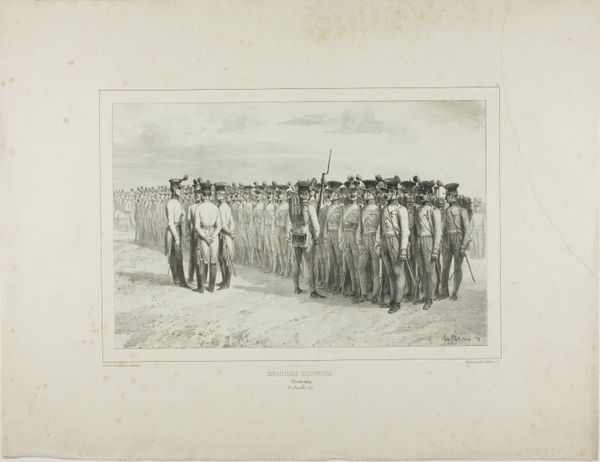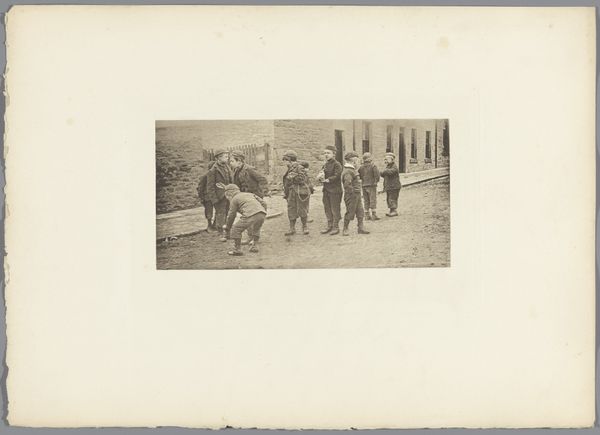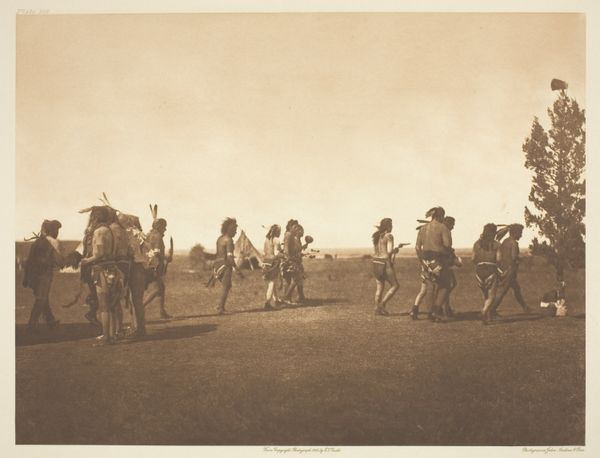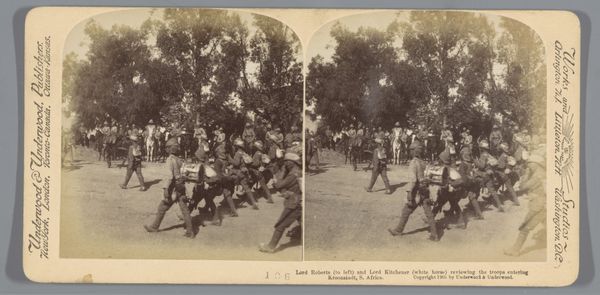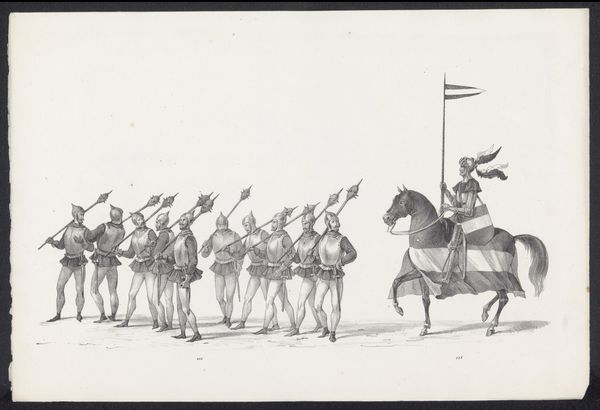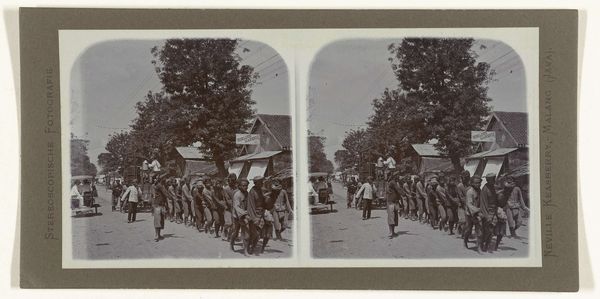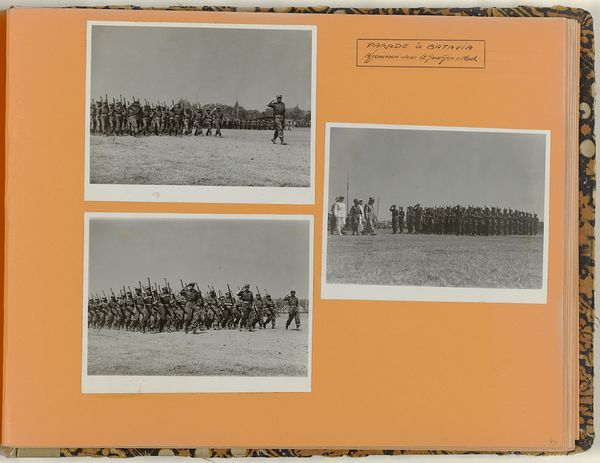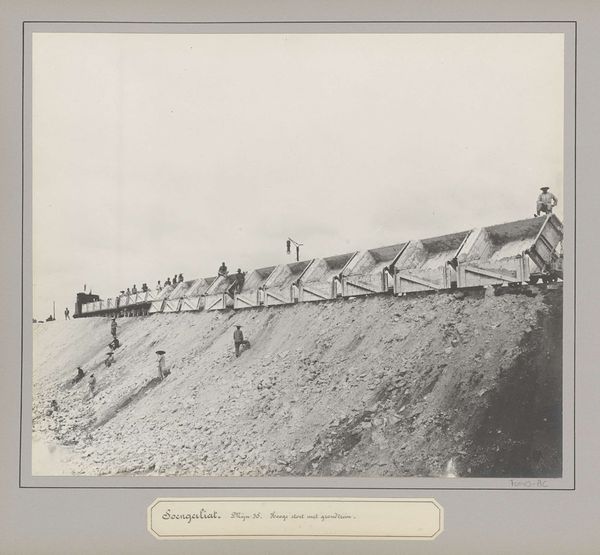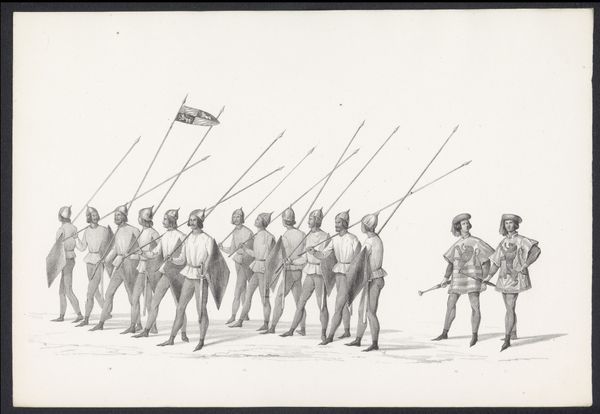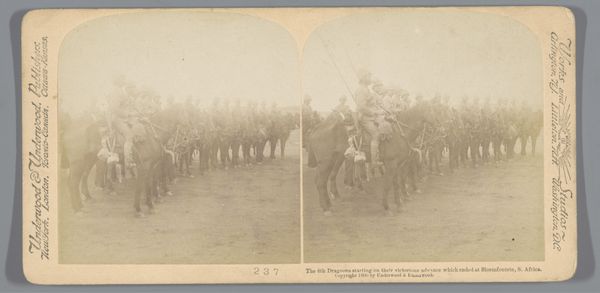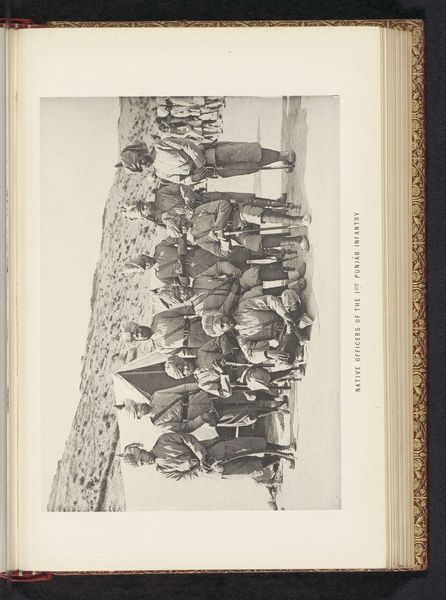
drawing, print, graphite, engraving
#
drawing
# print
#
graphite
#
genre-painting
#
academic-art
#
engraving
#
realism
Dimensions: height 209 mm, width 328 mm
Copyright: Rijks Museum: Open Domain
Editor: We’re looking at "Peloton soldaten met getrokken zwaard" or "Platoon of Soldiers with Drawn Swords" by Auguste André Lancon, created around 1875, a print made using graphite and engraving. I'm immediately struck by the regimented lines and the rather serious, even ominous mood it creates. What can you tell me about its historical context? Curator: This piece gives us insight into the militaristic culture of late 19th-century Europe. It’s not just a depiction of soldiers, it's a reflection of the rising nationalism and military buildup prevalent at the time. Academic art like this served to reinforce those values and project an image of power. The image might remind viewers of France's ambitions after their defeat in the Franco-Prussian war. Editor: So, the print isn't simply recording reality, but rather contributing to a specific image of France at the time? How would prints such as this one circulate in the broader population? Curator: Exactly. Prints were widely circulated through illustrated newspapers and periodicals. It allowed for a visual reinforcement of power to a wide public. The very act of portraying the army in this regimented way aimed to impress upon the viewer ideas about France's resilience and control, perhaps even more so than pure military training. Think about it, the artist is choosing to focus on a particular vision of national identity. Editor: That’s a really interesting perspective. I hadn't considered the role of art in shaping perceptions of national strength and purpose. Thanks! Curator: Precisely. Reflecting on the image, I now have more consideration on how cultural imagery plays in public and social sentiment.
Comments
No comments
Be the first to comment and join the conversation on the ultimate creative platform.

